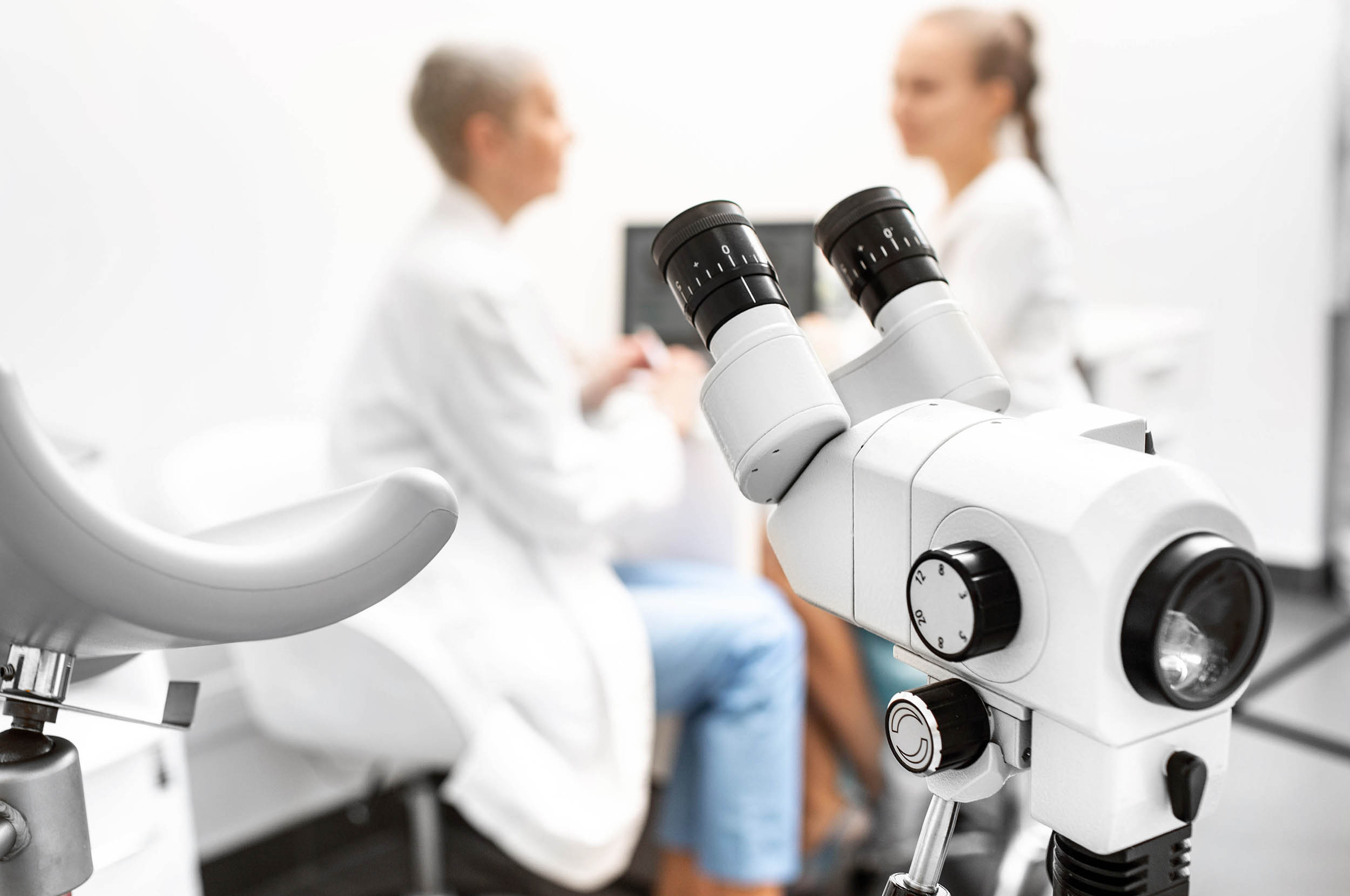- Mon - Fri: 08:00 - 17:00
- info@parkwegkliniek.nl
- +31 (0)43 321 03 10

You have been referred to the smear clinic because you have an abnormal result from the cervical smear. At the smear consultation, the gynaecologist will investigate what is causing this. If necessary and possible, abnormalities are also treated immediately. Most women with an abnormal smear will never develop cervical cancer, but sometimes treatment is wise. This page tells you more about its origin, examination, diagnosis and treatment.
An abnormal smear is almost always caused by infection with HPV, the human papillomavirus. You cannot protect yourself from infection with this virus. There are more than 100 types of HPV. Some of them pose an increased risk of cervical cancer. These are called high-risk human papillomavirus (hrHPV).
hrHPV
The virus can infect the cervix during sexual contact. The virus is often already in the pubic area. Besides vaginal sex, objects entering the vagina can also infect the cervix.
You have an abnormal result from your smear test. This is why you are going to the gynaecologist for tests. The gynaecologist will look at your cervix with a microscope. This is called a colposcopy. You will first have a conversation with the gynaecologist. The gynaecologist will ask you some questions and give you information about:
Do not hesitate to ask questions.
The colposcopy takes place next.
The gynaecologist inserts a spreader (also called a duck's mouth) into the vagina, just like when taking a smear test. In front of the entrance to the vagina, the gynaecologist places a microscope with a bright light. This is the colposcope. This allows the gynaecologist to look closely at the cervix and vagina.
To see more details, the gynaecologist applies one or more dyes to the cervix:
The gynaecologist will then discuss with you whether it is necessary to:
The following explains the different options.
Wait and see
The gynaecologist looks closely at the cervix. If the gynaecologist sees no suspicious spots, no biopsy or treatment is necessary. Of course, you will remain under observation. You can read more about this under the heading: 'What does your follow-up procedure look like'.
Biopsies
Does the gynaecologist see an abnormality? Then the gynaecologist will take one or more pieces of tissue from the abnormal area using small forceps. This may hurt for a while. You will feel this less if you cough while taking the biopsy. The gynaecologist may also suggest removing the abnormal spot directly (see the information below on 'Lisexcision'). This is done with local anaesthetic.
The biopsy creates a small wound that may bleed. Sometimes the gynaecologist will dot the wound with silver nitrate to reduce bleeding. You will then feel some mild cramps at the bottom of the abdomen. Usually the bleeding is very light and using a sanitary towel is sufficient. The bleeding usually disappears on its own within a few days. Does it take longer or is it more than an ordinary period? If so, contact the clinic.
The pathologist examines the tissue under the microscope. The gynaecologist will call you after one to two weeks to give you the results.
The result of the cervical examination by the gynaecologist is expressed in CIN. CIN is an abbreviation of Cervical Intraepithelial Neoplasia.
Result Meaning
CIN 1 Slight abnormality
CIN 2 Moderate abnormality
CIN 3 Severe anomaly
CIN 1:
CIN 2:
CIN 3:
Possible treatments after colposcopy are: